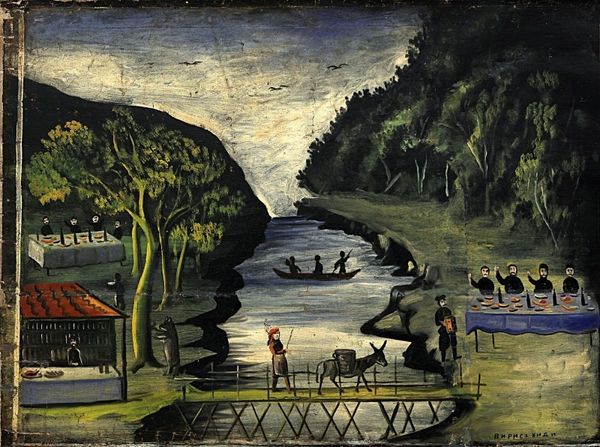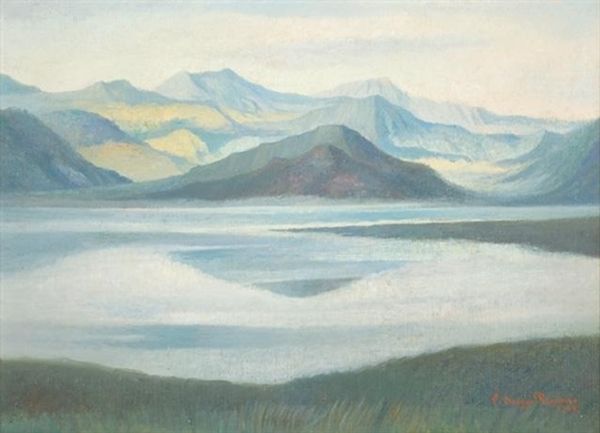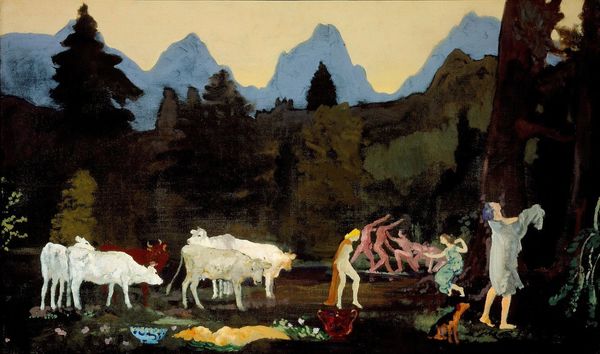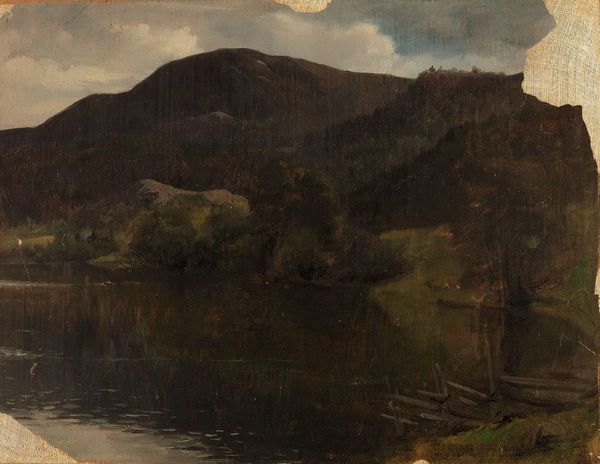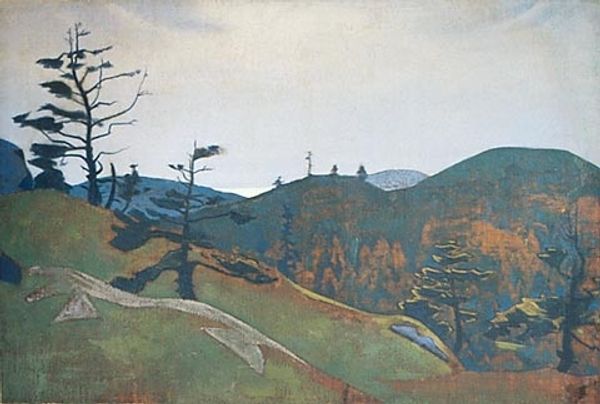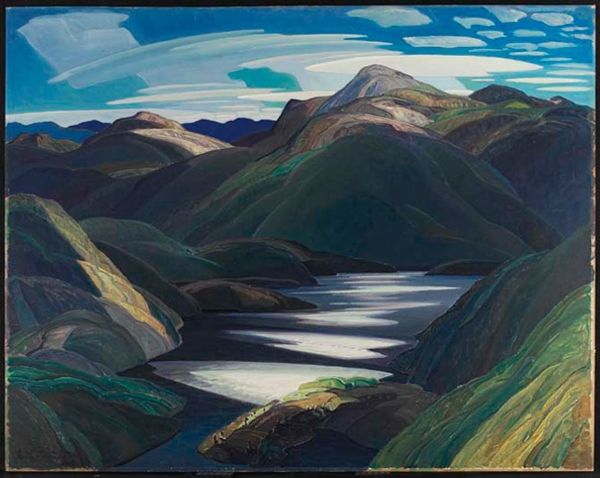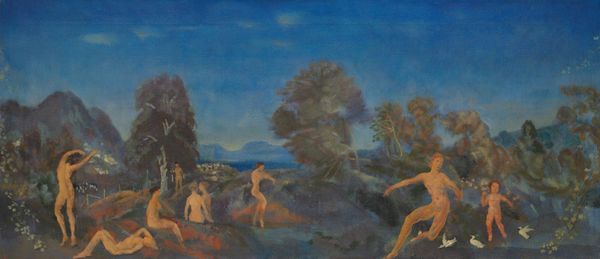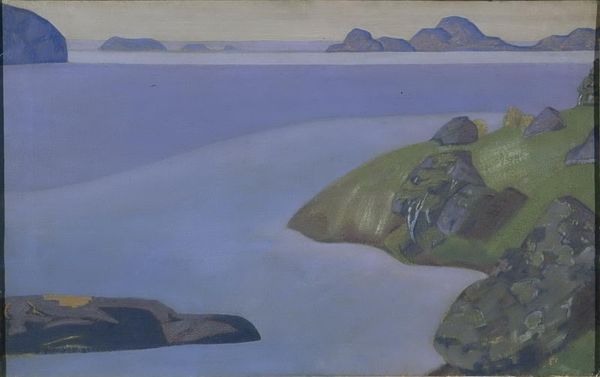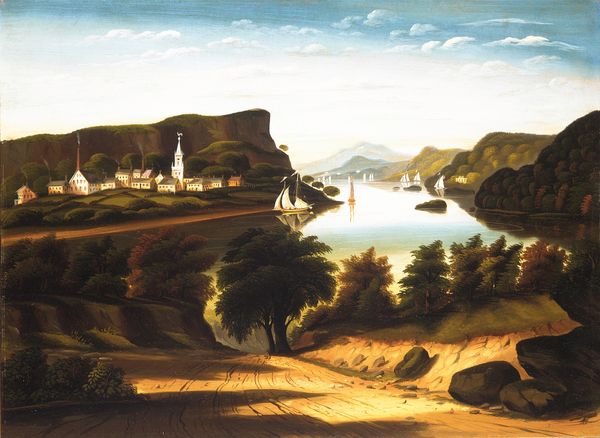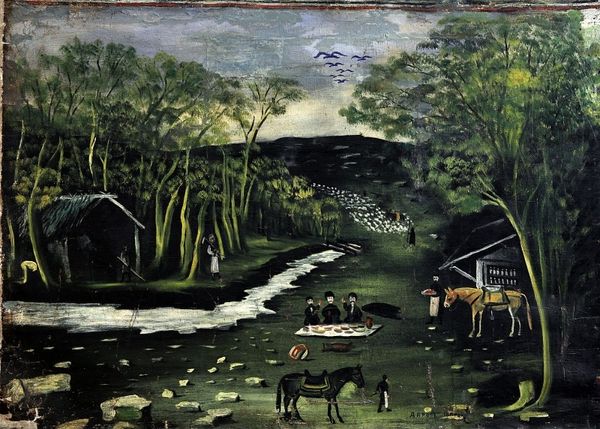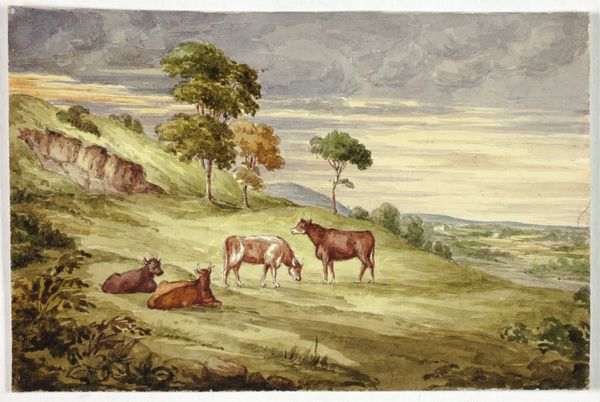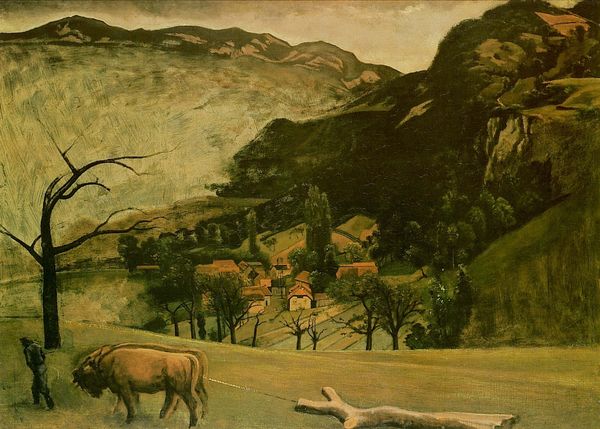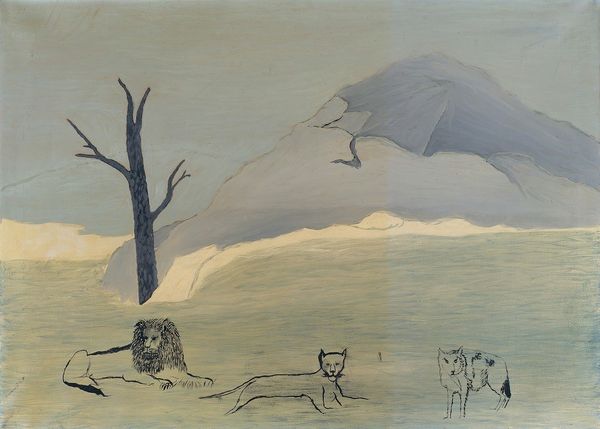
Hunting Scene with a View of the Black Sea 1912
0:00
0:00
nikopirosmani
Art Museum of Georgia (AMG), Tbilisi, Georgia
painting, oil-paint
#
cliff
#
narrative-art
#
painting
#
oil-paint
#
landscape
#
figuration
#
rock
#
natural-landscape
#
water
#
painting painterly
#
nature
#
expressionist
#
realism
Dimensions: 105 x 358 cm
Copyright: Public domain
Editor: Here we have Niko Pirosmani’s "Hunting Scene with a View of the Black Sea," painted in 1912. It’s oil on cloth and gives this impression of a landscape frozen in time. There’s something both naive and incredibly impactful about it. What do you see in this piece, particularly given its context? Curator: I see a powerful commentary on the societal structures of Pirosmani's Georgia. Hunting, historically a pursuit of the aristocracy, is juxtaposed with the Black Sea, a vital trade route and a symbol of Georgia's connection to the world. Note how the figures engaged in labor coexist within the hunting tableau. What does it suggest about the artist’s perspective on class and access? Editor: So, it's not just a scene, but almost a layering of different worlds, right? The hunters, the Black Sea traders, the animals... Is it maybe a critique of social mobility, or perhaps its absence? Curator: Precisely. Consider the historical moment: Georgia was on the cusp of immense change. Pirosmani, often marginalized himself, captures this tension beautifully. His deliberately flattened perspective could even symbolize the limited perspectives and rigid hierarchies of his time. Do you think the naivety that you perceived challenges the traditional expectations of landscape painting? Editor: It definitely does. By simplifying forms and emphasizing certain details, he makes you focus on these individual narratives instead of being overwhelmed by the grandeur of the landscape itself. So the animals are given importance beyond the human? Curator: Exactly. Their presence is significant; their fate intertwined with the hunters but they have agency of movement within their own space, almost mirroring that of Georgian culture trying to coexist during a period of colonial power games. And it's essential to consider Pirosmani's background; he identified with the margins. This makes us view this work through a lens of social critique. Editor: I never would have looked at it this way. This painting suddenly feels so much more complex than a simple snapshot of a hunting scene. Curator: Indeed. Art can become a mirror reflecting society, as we found here in Pirosmani's work.
Comments
No comments
Be the first to comment and join the conversation on the ultimate creative platform.
